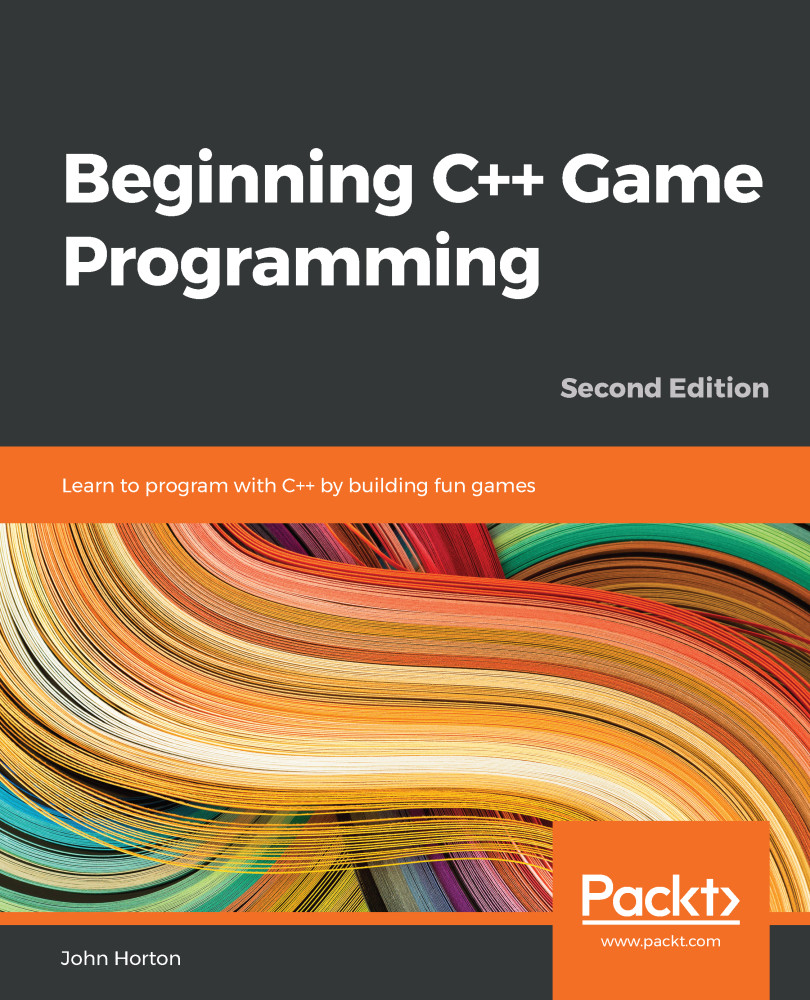Summary
This was quite a challenging chapter and perhaps a little bit mean to be the first one. It is true that configuring an IDE to use a C++ library can be a bit awkward and long. Also, the concepts of classes and objects are well known to be slightly awkward for people who are new to coding.
Now that we are at this stage, however, we can totally focus on C++, SFML, and games. As we progress with this book, we will learn more and more C++, as well as implement increasingly interesting game features. As we do so, we will take a further look at things such as functions, classes, and objects to help demystify them a little more.
We have achieved plenty in this chapter, including outlining a basic C++ program with the main function, constructing a simple game loop that listens for player input and draws a sprite (along with its associated texture) to the screen.
In the next chapter, we will learn about all the C++ we need to draw some more sprites and animate them.


































































